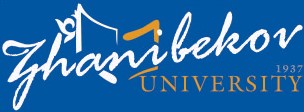A Search for a Model in Village Institute and the Soviet Ideological Education System
A Search for a Model in Village Institute and the Soviet Ideological Education System
DOI:
https://doi.org/10.47751/skpu.1937.v43i1.4Keywords:
education, system, Village Institutes, state, student, teacherAbstract
When we look at it from a historical perspective, we witness that the search for a new system in culture, art and education has been started within the public system in the structuring of Turkey and the Soviet Republics, which have been in neighborly relations in the recent period. They needed an education with common slogans such as secular education, modern education, revolutionary education, genderless education, etc., hidden under cover of political ideology. In both states, where literacy was at a very low level, with poverty and post-war devastation, education was the monopoly of the state as one of the urgent and basic conditions. Under all these conditions, in order to start education in rural areas, student candidates who provided pedagogical education, trained teacher-oriented graduates, had a short education period and were also skilled in the fields of industry, health, animal husbandry and agriculture were required. In the Village Institutes that started education in Turkey in 1940 individuals (girls and boys) from rural areas who are idealistic, trustworthy and who respond to these conditions were selected and training soldiers began to be prepared. In the Soviets, the foundations of education were formed by idealist, socialist and revolutionary youth. In the new schools, where it was aimed to prepare graduates who would help destroy the wealthy and culturally valuable segments under the class struggle and be loyal to the new Soviet ideology, there was also propaganda for godlessness and nationalism. Village Institutes were a step forward in Turkey's educational life, especially in times of poverty, ignorance and ruin. Education has been brought to the doorstep of those in need, and these educational institutions have become an economically suitable education model for the purpose of modernization, development, learning and production. This education system, which took art and aesthetics to places they could never go before, also played a rare role in raising the villagers' awareness and becoming productive. The Soviet new education system process, which started with idealist approaches in the same period, was one of the main tasks of state policy. Today, various reforms and changes in the field of education in post-Soviet states have not been sufficiently corrected, and Soviet education is still implemented as a discipline-based education that includes basic courses. In this paper, information will be given about the new education system created in the fifteen republics of the Union of Soviet Socialist Republics and the Republic of Turkey, and in the example of the Village Institutes, the basic approaches and the goals pursued in this education system will be compared.








